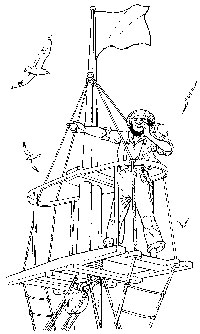F R O M T H E C R O W E ’ S N E S T
A Reasonable Simulation

This June the New England Fisheries Management Council held meetings to further develop an Ecosystem Based Fisheries Management (EBFM) plan for the Northeast Shelf of the U.S. Implementation is expected in 2019. The plan will consider the whole habitat fish require if they are to become continuously available for harvest.
The strategy is to look at everything from phytoplankton to the market value of fish at auction. This shift away from the failed single species management strategy of the last several decades could not be more dramatically different from it. In theory, rehabilitating the fish habitat of one of the historically most productive fishing grounds in the world could be a bonanza for fishermen. The wild cards in this game plan are time and how it might change fishing.
But the ace is the question whether deep ocean habitat restoration and management can be done in the abstract reality of tech labs running data of some kind through computer models speculating on where it will all lead? There are areas in the Gulf of Maine where habitat has gone from being relatively barren to being repopulated by plants and fish. Is this renewed version the same as the original habitat that generated the huge fish populations that Europeans found here in the early 1600s?
That question may not need to be answered. It is already known that fish populations cannot survive without enough mature fish and enough suitable, protected places to lay their eggs and have them hatch.
EBFM will displace single species management that after decades was finally declared a bust. Management plans don’t come into existence overnight and getting rid of the ones that don’t work can be a nightmare.
Wild fisheries, fishermen, fishing communities and the industry along the northeast shelf need help. Taking the single species roulette wheel out of the management tool box is a good place to start.
Wild fish habitat is what produced the fisheries resource once thought to be inexhaustible. Reproducing that habitat could be an extraordinary second chance for fishermen and New England.
With all the known fish habitat problems and the unfolding climate and ocean unknowns, we may have to settle for a reasonable simulation.
